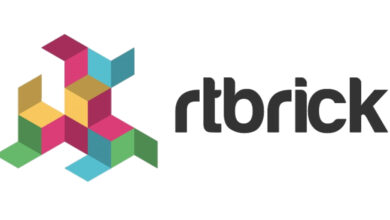China Nonferrous Gold Limited UK Regulatory Announcement: Pakrut Gold Mine Independent Technical Report

LONDON–(BUSINESS WIRE)–
China Nonferrous Gold Limited 中国有色黄金有限公司
(“CNG” or the “Company”)
Pakrut Gold Mine Independent Technical Report
Mineral Resource Estimate Update
China Nonferrous Gold Limited 中国有色黄金有限公司 (AIM: CNG), the mineral exploration and mining company currently mining the Pakrut gold mine (“Pakrut”) in the Republic of Tajikistan, today announces the details of an updated Independent Technical Report (“ITR”) completed by SRK Consulting China Limited (“SRK”) and releases an update to Mineral Resource and Ore Reserve estimates for Pakrut in accordance with the Australasian Code for Reporting of Exploration Results, Mineral Resources and Ore Reserves (“JORC Code”, 2012 edition as current effective edition),. The update reflects a substantial reduction in the Mineral Resource Estimate released by the Company (under its previous name of Kryso Resources plc) on 17 June 2013, and reflects the Company’s increasing knowledge and access to the underground ore body as operational work has progressed.
Summary:
- Measured and Indicated Mineral Resources estimate as of 31 December 2022 at the Pakrut Gold Mine, now 6.7 million tonnes with an average grade of 2.1 g/t gold for about 14,000 kg (equivalent to 440,000 ounces) of contained gold, at a cut-off grade of 1.0g/t (previously 1.9 million ounces with an average grade of 3.16g/t reported at a cut-off grade of 0.5g/t, although 172,200 ounces of gold have been extracted since commencement of mining operations);
- Inferred Mineral Resource estimate as of 31 December 2022 now 7.8 million tonnes with an average grade of 2.2 g/t gold for about 17,000 kg (560,000 ounces) contained gold (previously 660,000 ounces at 2.05g/t at a cut-off grade of 0.5 g/t);
- Using a gold cut-off of 1.5 g/t, Proved Ore Reserves now estimated to 1.3 million tonnes at 2.0g/t gold for 2,700 kg contained gold (86,000 ounces) and Probable Ore Reserves now estimated about 2.9 million tonnes of Probable Ore Reserves averaging 1.9 g/t gold for 5,400kg of gold (180,000 ounces) (previously 1.55million oz gold at 3.1g/t at cut-off grade of 1.0g/t and 222,258 oz gold at 2.5g/t at cut-off grade of 1.0g/t for Proved and Probable ore reserves, respectively), although 172,200 oz of gold have been extracted since commencement of mining operations);
- Estimated remaining life of mine for the project based on current Ore Reserve estimates is now 6 years, producing on average 43,000 ounces from 700,000 tonnes of ores per annum until 2029.
- Forecasted production capacity remains at 2,000 tonnes per day.
Zhang Hui, CNG’s Managing Director, commented:
“SRK have produced an updated JORC Code compliant mineral resource estimate and ore reserves estimate. The Company will continue to progress work at site, carry out cost reductions and work to improve efficiencies. In addition, it will look to increase exploration activity at site with a view to extending the life of mine”.
Background
The substantial reduction in the Mineral Resource Estimate when compared with SRK’s previous mineral resource estimation has been impacted by the following factors:
- this new Mineral Resource Estimate, is exclusive of all mined-out materials since the Company commenced operations in 2015, whereas at the time of the previous resource estimated the materials were in-situ without depletion (mining at site had not commenced). 172,200 oz of gold have been extracted to date.
- a total of five gold mineralization zones (“GMZs”) are delineated at Pakrut. Namely GMZ 1, 3, 5, 6 and 7. The Measured and Indicated Mineral Resources are situated in GMZ 1 and GMZ 3. Previous resource estimates have included GMZ 3 (Eastern Pakrut), but operating practices indicate that the gold grade in this GMZ 3 is less than 1.5g/t and therefore not currently economic. Accordingly, this Mineral Resource Estimate only incorporates GMZ 1 (Pakrut) and LLC Pakrut intends to exploit just GMZ 1 in the future.
- the Cut-off grade of gold has increased from 0.5 g/t used in previous Mineral Resource Estimates to 1.0 g/t for this Mineral Resource Statement, reducing the amount of material that is included in the Mineral Resource Estimate because operational performance shows that mining dilution is higher than previously estimated.
- A considerable amount of data from new boreholes and channels has been added to the database originally used in previous Mineral Resource Estimates, following actual operational and further exploration activities, which has increased the awareness and knowledge of the geometry of the Pakrut Deposit.
- The Pakrut gold mineralisation is associated with structural alteration and is of vein type deposit, which can make the geological interpretation of the ore body more complicated when compared to other deposit types. This can be particularly challenging for the resource estimation at the exploration stage (the previous Mineral Resource Estimates were prepared at an exploration stage). However, the use of underground drilling and channeling activities during the construction and production stage has enabled a more comprehensive understanding and interpretation of local geology of the deposit.
Mineral Resource Statement
SRK’s assumptions for the cut-off grade calculation for the Mineral Resource Statement were selected based on experience, benchmarking against similar projects in line with an industry standard commonly used by external experts, as well as a general scoping study of the Pakrut Project and the Company’s past operational performance. SRK has applied a gold grade of 1.0 g/t as an appropriate cut-off grade for the Mineral Resource statement for the Pakrut Project. The resource statement is based on a gold price of 1,860 USD/oz. Operating costs of 50 USD/t of ore mined and processing recovery rate of 80% applied to the resource statement are based on historical mine performance.
The Mineral Resource statement is shown in Table 1. The in-situ mineral resources were estimated as of 31 December 2022.
Table 1: Mineral Resource Statement for Pakrut Project, as of 31 December 2022 (Project is owned 100% by Pakrut LLC so the table below includes both gross and net attributable figures)
| GMZ | Category | Cut-off (g/t Au) | Tonnage (kt) | Au Grade (g/t) | Au Content (kg) | Au Content (koz) | Operator |
| 1 | Measured | 1.0 | 1,600 | 2.2 | 3,500 | 110 | Pakrut LLC |
| – | Indicated | 1.0 | 3,600 | 2.2 | 8,000 | 260 |
|
| – | Inferred | 1.0 | 5,900 | 2.4 | 14,000 | 450 |
|
| 3 | Measured | 1.0 | 490 | 1.4 | 680 | 22 |
|
| – | Indicated | 1.0 | 1,000 | 1.6 | 1,600 | 52 |
|
| – | Inferred | 1.0 | 1,500 | 1.8 | 2,600 | 84 |
|
| 5 | Inferred | 1.0 | 24 | 1.3 | 31 | 1 |
|
| 6 | Inferred | 1.0 | 320 | 1.5 | 460 | 15 |
|
| 7 | Inferred | 1.0 | 100 | 1.7 | 180 | 6 |
|
| Total | Measured | 1.0 | 2,100 | 2.0 | 4,200 | 140 |
|
| – | Indicated | 1.0 | 4,600 | 2.1 | 9,600 | 310 |
|
| – | Measured + Indicated | 1.0 | 6,700 | 2.1 | 14,000 | 440 |
|
| – | Inferred | 1.0 | 7,800 | 2.2 | 17,000 | 560 |
|
Source: SRK
Notes:
1 Both the tonnage and gold contents are rounded to the second significant digit. Gold grade was rounded to the first digit after the decimal point. The totals may not add due to rounding discrepancies.
2 Numbers of the contained Au metal in this table are estimated based on the resource tonnages and grades, and do not represent the exact amount of extractable metal for this Project. They should be treated differently from the expected production of gold ingot. The conversion between ounce and gram is 1: 31.1035 in this Report.
3 The information in the Report which relates to Mineral Resource is based on information compiled by Mr. Yonggang Wu and Mr. Pengfei Xiao, full time employees of SRK China, and members of the Australasian Institute of Mining and Metallurgy (AusIMM). Both Mr. Yonggang Wu and Mr. Pengfei Xiao have sufficient experiences which are relevant to the style of mineralisation and the type of deposits under consideration and to the activity which they are undertaking to qualify as Competent Persons as defined in the JORC Code. Mr. Yonggang Wu and Mr. Pengfei Xiao consent to the reporting of this information in the form and context in which it appears.
4 The Measured and Indicated Mineral Resources are inclusive of those Mineral Resources converted to Ore Reserves.
Ore Reserve Estimates
A bankable feasibility study report (“BFS”) was prepared by the BGRIMM Technology Group (“BGRIMM”) based on the mineral resource estimate validated in 2014. The forecasts from the report suggests that mining recovery and dilution are about 88% and 10% respectively. SRK is satisfied that these values fairly reflect operation performance and apply the same values in this update.
For information, the economically mineable parts of the Measured Mineral Resources, which includes diluting materials and allowances for losses, are classified as Proved Ore Reserves and the economically mineable parts of the Indicated Mineral Resources, which includes diluting materials and allowances for losses, are classified as Probable Ore Reserves.
Cut Off Grade
The Ore Reserves of the Pakrut Project are reported at a gold cut-off grade of 1.5 g/t as of 31 December 2022 using industrial standard and technical assumptions. Whilst these assumptions were true at the time of calculation, they can change over time. The parameters used by SRK to calculate cut-off grade are as follows:
- The long-term gold price of Consensus Market Forecasts (“CMF”) is 1,430 USD/oz in March 2023. The price was adopted by SRK to calculate cut-off grade (“COG”).
- The proposed recovery rate is 82.99% in the BFS for combined processing and metallurgical operations to process feed ores with a gold grade of about 3.1 g/t. The actual recovery rate varied from 80.02% to 81.88% in last three years to process feed ores with gold grade varied from 2.16 g/t to 2.08 g/t. Considering that the feed grade in future (about 1.9 g/t) is expected to be less than that of BFS and production records, SRK has adopted a recovery rate of 80% to calculate COG.
- The Company’s operating costs varied between 46.14 USD/t ore and 59.14 USD/t ore in the last three years operating. The ore tonnage weighted average costs are about 52.60 USD/t ore. SRK adopted the Company’s current actual operating costs (“Opex”) of 53 USD/t to calculate COG.
A summary of Ore Reserves is shown in Table 2.
Table 2: Summary of Proved Ore Reserves on Each Level as of 31 December 2022 (Project is owned 100% by Pakrut LLC so the table below includes gross and net attributable figures)
| GMZ | Category | Cut-off (g/t Au) | Tonnage (kt) | Au (g/t) | Au(kg) | Au (koz) | Operator |
| 1 | Proved | 1.5 | 1,300 | 2.0 | 2,700 | 86 | Pakrut LLC |
|
| Probable | 1.5 | 2,900 | 1.9 | 5,400 | 180 |
|
|
| Total | 1.5 | 4,200 | 1.9 | 8,100 | 260 |
|
Sources: SRK
Notes:
1 All figures are rounded to reflect the relative accuracy of the estimate.
2 The mining dilution rate is 10%. The mining recovery rate is 88%.
3 The Ore Reserves are included in the Mineral Resources. They shouldn’t be added to the Mineral Resources.
4 The information in the Report which relates to Ore Reserve is based on information compiled by Mr. Yonggang Wu, a full time employee of SRK China and a member of the AusIMM. Mr. Yonggang Wu has sufficient experience which is relevant to the style of mineralisation and the type of deposits under consideration and to the activity which they are undertaking to qualify as a Competent Persons as defined in the JORC Code. Mr. Wu consents to the reporting of this information in the form and context in which it appears.
The ore reserve estimate conducted by SRK was based on the assumptions proposed in the BFS and actual operating status.
At a gold cut-off of 1.5 g/t, the Pakrut Project contains 1,300 kt of Proved Ore Reserves averaging 2.0 g/t gold and 2,900 kt of Probable Ore Reserves averaging 1.9 g/t gold. The ore reserve estimate is also supported by SRK’s estimate of a mining and processing production schedule, which is detailed as follows: Table 3: Production Schedule
| Item | Unit | Total | 2023 | 2024 | 2025 | 2026 | 2027 | 2028 | 2029 |
| Ore Tonnage | kt | 4,237 | 700 | 700 | 700 | 700 | 700 | 527 | 211 |
| Gold grade | g/t | 1.9 | 1.9 | 2.0 | 1.8 | 1.8 | 2.0 | 2.0 | 1.7 |
| Gold contained | Kg | 8,119 | 1,363 | 1,381 | 1,288 | 1,288 | 1,384 | 1,058 | 356 |
| Recovery rate | % | 81.90 | 81.90 | 81.90 | 81.90 | 81.90 | 81.90 | 81.90 | 81.90 |
| Recovered gold | kg | 6,650 | 1,116 | 1,131 | 1,055 | 1,055 | 1,134 | 867 | 292 |
Net Present Value:
NPVs at various discount rates, which are shown in Table 3, provide an indication that it is economically viable for Pakrut Project to report Ore Reserves.
Table 4: NPVs at Various Discount Rates
It should be emphasized that the economic analysis presented in this section is based purely on the results of the technical review provided in previous sections, on the BFS, and on SRK’s own study and assumptions, and is provided for ore reserve conversion and project evaluation purposes.
| Discount Rate (%) | NPV |
| 9 | 64,020,000 |
| 10 | 62,416,000 |
| 11 | 60,881,000 |
Sources: SRK
The assumptions behind these NPVs are as follows:
- The discounted cash flow method (the “DCF”) is selected as the foundation of economic analysis.
- A 10% discount rate was adopted by SRK to calculate net present values (“NPV”).
- The base date is assumed to be 31 December 2022, and all the assumptions are subject to conditions obtained at the base date.
- All the ore mined is assumed to be feed to the processing plant and gold bullion It’s anticipated that the life of mine (“LOM”) is about 6.3 years, and that the mine is producing until 2029. The Opex forecasts which were estimated based on last three years (2020 – 2022) actual Opex, remain true and correct. Note: depreciation and amortization have been excluded in the operating coast estimates. Sunken capital costs are based on the balance sheet date as at 31 December 2022 of US$152m.
- As there is no significant expansion for the Pakrut project planned, and underground expenditure and equipment is already taken into account, the sustaining capital expenditure relates only to mine closure estimated by SRK to be which is about USD 5,180, 000 (2.5% of total Opex). The added cost will be expended in year 2029, that is the end of mine life. While SRK has identified there is a need to consider the residual assets including plants and smelters, it is assumed that the residual assets are able to cover the expenditures for mine closure in 2029. Therefore, there is no additional cost or reclaimed cash balance used for the NPV calculation. The royalty tax is about 6% of sale revenues. The corporate income tax is the maximum of 18% of taxable revenues and 1% of sales revenues. Other taxes are minor.
The NPV is particularly sensitive to gold price, at a gold price of US1,250/oz the NPV is estimated to be US$49,538,000 and at a gold price of US$2,050/oz the NPV is estimated to be US$122,311,000
Note: JORC Table 1, Section 1 (Sampling Techniques and Data), Section 2 (Reporting of Exploration Results), Section 3 (Estimation and Reporting of Mineral Resources) and Section 4 (Estimation and Reporting of Ore Reserves), are attached in Appendix 1 of this Announcement.
Competent Person Statement:
Resource:
1 The information in this Report which relates to Mineral Resource is based on information compiled by Mr. Yonggang Wu and Mr. Pengfei Xiao, full time employees of SRK China, and members of the Australasian Institute of Mining and Metallurgy (AusIMM). Both Mr. Yonggang Wu and Mr. Pengfei Xiao have sufficient experiences which are relevant to the style of mineralisation and the type of deposits under consideration and to the activity which they are undertaking to qualify as Competent Persons as defined in the JORC Code. Mr. Yonggang Wu and Mr. Pengfei Xiao have reviewed the information contained in this announcement and consent to the reporting of this information in the form and context in which it appears.
Reserve:
2 The information in this Report which relates to Ore Reserve is based on information compiled by Mr. Yonggang Wu, a full-time employee of SRK China and a member of the AusIMM. Mr. Yonggang Wu has sufficient experience which is relevant to the style of mineralization and the type of deposits under consideration and to the activity which they are undertaking to qualify as a Competent Persons as defined in the JORC Code. Mr. Wu has reviewed the information contained in this announcement and consents to the reporting of this information in the form and context in which it appears.
Glossary of abbreviations
| Au | the chemical symbol of gold |
| BGRIMM | Beijing General Research Institute of Mining and Metallurgy |
| CNGL(CNG) | China Nonferrous Gold Limited, formerly as Kryso Resources Corporation Limited, which was reformed from Kryso Resource Plc |
| ITR | Independent Technical Review |
| JORC Code | The Australasian Code for Reporting of Exploration Results, Mineral Resources and Ore Reserves prepared by the Joint Ore Reserves Committee of the Australasian Institute of Mining and Metallurgy, Australian Institute of Geoscientists and Minerals Council of Australia (JORC), December 2012. |
| Kt | thousand tonnes |
| Mt | million tonnes |
| Mtpa | million tonnes per annum |
| SRK | SRK Consulting China Ltd |
| Tpa | tonnes per annum |
Glossary of Technical Terms
| Category C1 | A mineral resource/reserve category in accordance with Russian resource/reserve classification system; the overall level of its geological control and studies is higher than Category C2 and lower than Category B |
| Category C2 | A mineral resource/reserve category in accordance with Russian resource/reserve classification system; the overall level of its geological control and studies is higher than Category P1 and lower than Category C1 |
| Category P1 | A mineral resource/reserve category in accordance with Russian resource/reserve classification system; the overall level of its geological control and studies is higher than Category P2 and lower than Category C2 |
| GMZ | gold mineralised zone; GMZs are used for describing generally the zones and/or bodies with gold mineral resources defined in the Pakrut Project and the Eastern Pakrut Project |
| g/t | gram per tonne, equal to part per million |
| Indicated Mineral Resource | That part of a resource for which tonnage, densities, shape, physical characteristics, grade and mineral content can be estimated with a reasonable level of confidence. It is based on exploration, sampling and testing information gathered through appropriate techniques from locations such as outcrops, trenches, pits, workings and drill holes. The locations are too widely or inappropriately spaced to confirm geological and/or grade continuity but are spaced closely enough for continuity to be assumed |
| Inferred Mineral Resource | That part of a resource for which tonnage, grade and mineral content can be estimated with a low level of confidence. It is inferred from geological evidence and assumed but not verified geological and/or grade continuity. It is based on information gathered through appropriate techniques from locations such as outcrops, trenches, pits, workings, and drill holes which may be limited or of uncertain quality and reliability |
| LOM | life of mine, same as ROM |
| Measured Mineral Resource | That part of a resource for which tonnage, densities, shape, physical characteristics, grade and mineral content can be estimated with a high level of confidence. It is based on detailed and reliable exploration, sampling and testing information gathered through appropriate techniques from locations such as outcrops, trenches, pits, workings and drill holes |
| Mt | million tonnes |
| Probable Ore Reserve | The economically mineable part of an indicated, and in some circumstances measured, resource. It includes diluting materials and allowances for losses which may occur when the material is mined. Appropriate assessments, which may include feasibility studies, have been carried out, and include consideration of and modification by realistically assumed mining, metallurgical, economic, marketing, legal, environmental, social and government factors. These assessments demonstrate at the time of reporting that extraction could reasonably be justified. |
| Proved Ore Reserve | The economically mineable part of a measured resource. It includes diluting materials and allowances for losses which may occur when the material is mined. Appropriate assessments, which may include feasibility studies, have been carried out, and include consideration of and modification by realistically assumed mining, metallurgical, economic, marketing, legal, environmental, social and government factors. These assessments demonstrate at the time of reporting that extraction could reasonably be justified. |
| QA/QC | quality assurance/quality control |
For further information please visit the Company’s website (www.cnfgold.com) or contact:
China Nonferrous Gold Limited
Zhang Hui, Managing Director
Tel: +86 10 8442 6627
WH Ireland Limited (NOMAD & Broker)
Katy Mitchell, Andrew de Andrade
Tel: +44 (0)207 220 1666
BlytheRay (PR)
Tim Blythe, Megan Ray
Tel: +44 (0)20 7138 3224
The information contained within this announcement is deemed by the Company to constitute inside information under the Market Abuse Regulation (EU) No. 596/2014
Appendix 1 JORC Code, 2012 Edition – Table 1 (Pakrut Project)
Section 1 Sampling Techniques and Data
| Criteria | JORC Code explanation | Commentary – Assessment of the Pakrut Project |
| Sampling techniques |
|
|
| ||
| ||
| ||
| Drilling techniques |
|
|
| Drill sample recovery |
|
|
| ||
| ||
| Logging |
|
|
| ||
| ||
| Sub-sampling techniques and sample preparation |
|
|
| ||
| ||
| ||
| ||
| ||
| Quality of assay data and laboratory tests |
|
|
| ||
| ||
| Verification of sampling and assaying |
|
|
| ||
| ||
| ||
| Location of data points |
|
|
| ||
| ||
| Data spacing and distribution |
|
|
| ||
| ||
| Orientation of data in relation to geological structure |
|
|
| ||
| Sample security |
|
|
| Audits or reviews |
|
|
Contacts
China Nonferrous Gold Limited




